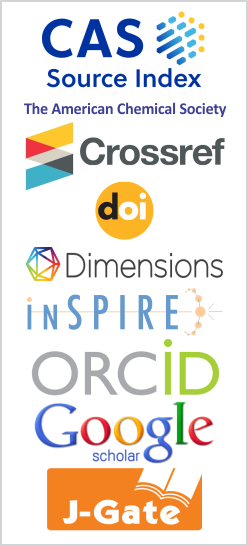Structure and Luminescence Properties of Y
DOI:
https://doi.org/10.26713/jamcnp.v3i1.386Keywords:
XRD, FTIR, UV-VIS, PL, NanophosphorsAbstract
Europium trivalent (EuDownloads
References
W.M. Yen and H. Yamamoto, Phosphor Handbook, CRC press.
A. Boukerik and L. Guerbous, J. Luminescence 145 (2014), 148–153.
B.V. Hao, P.T. Huy, T.N. Khiem, N.T. Nagan and P.H. Doung, J. Physics 187 (2009), 012074.
A.E. Morales, E.S. Mora and U. Pal, Rev. Max. Fis S, 53 (2007), 18.
P. Packiyaraj and P. Thangadurai, J. Luminescence 145 (2014), 997–1003.
Downloads
Published
2016-01-30
CITATION
How to Cite
Faizan, M., & Ahmad, S. (2016). Structure and Luminescence Properties of Y
Issue
Section
Research Article
License
Authors who publish with this journal agree to the following terms:- Authors retain copyright and grant the journal right of first publication with the work simultaneously licensed under a CCAL that allows others to share the work with an acknowledgement of the work's authorship and initial publication in this journal.
- Authors are able to enter into separate, additional contractual arrangements for the non-exclusive distribution of the journal's published version of the work (e.g., post it to an institutional repository or publish it in a book), with an acknowledgement of its initial publication in this journal.
- Authors are permitted and encouraged to post their work online (e.g., in institutional repositories or on their website) prior to and during the submission process, as it can lead to productive exchanges, as well as earlier and greater citation of published work.




